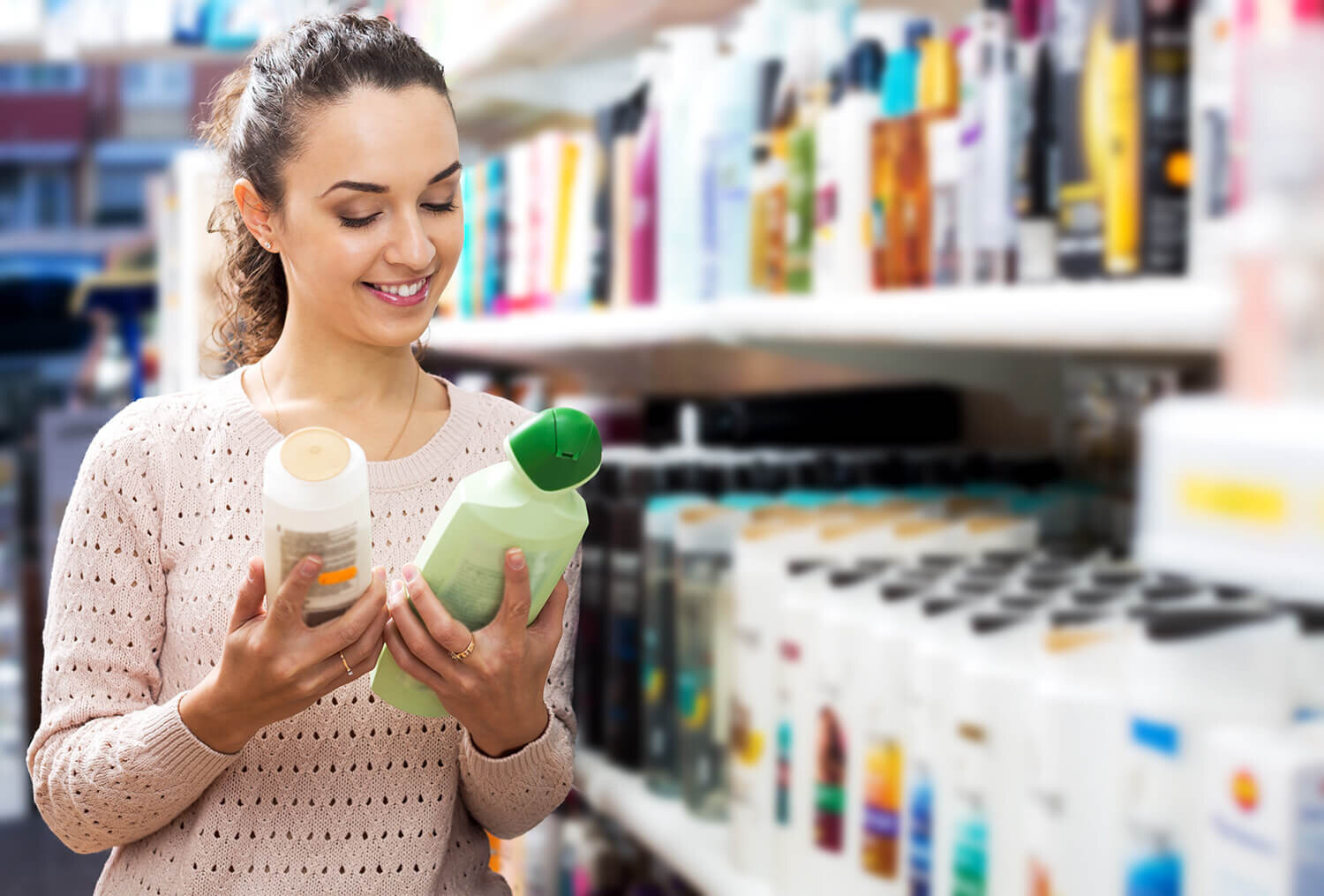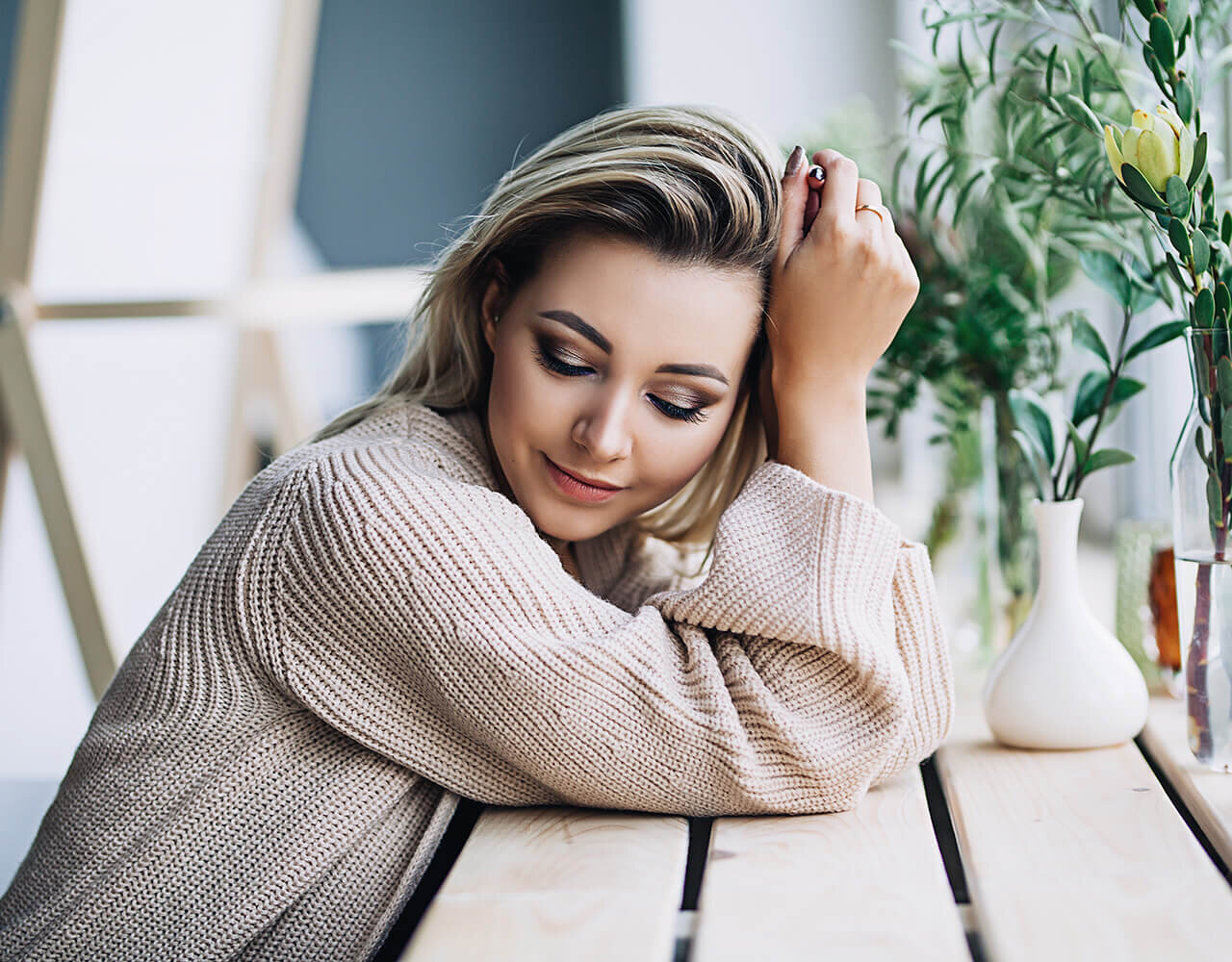Dry Shampoo: A Fast and Easy Way To Keep Your Hair Oil-Free
Some days you’re in too much of a hurry to take a shower. However, you don’t want to go outside with your hair looking like an oily mess. So what can you do? Luckily, there’s a ‘miracle’ product called dry shampoo.
Dry shampoo is a relatively recent phenomenon in the hair care industry, but it has picked up a lot of steam. Everyone from influencers to celebrities sings its praises, and for good reason. It’s a fast and easy way to keep your hair oil-free and your hairstyle looking fresh without needing to spend money on a hairstylist.
What is Dry Shampoo?
What is dry shampoo?
There are dozens of different dry shampoo that come as a powder, spray, or even paste. However, they all essentially perform the same function - they absorb excess sebum and other oils from your roots and freshen up the rest of your hair all without the need for water.
So how exactly does it work? As you probably know, your scalp is covered in hair follicles. These follicles don’t only grow hair, they also produce sebum, which is what helps keep your hair soft and protects your skin. This is a completely natural process and not something you can actually prevent. So even going about your day-to-day your scalp will produce sebum. Washing your hair every day is actually very bad for your hair as you are stripping it of its natural oils. This can lead to brittle and dry hair, which can lead to split ends and breakage.
Dry Shampoo Absorbs Oil
However, the longer you leave your hair unwashed, the more oil buildup you’ll have, leading to a greasy appearance. If you have an important interview or meeting and you don’t have the time to wash and dry your hair, then you’ll definitely want to keep some dry shampoo on hand. Regardless of what form you use, most dry shampoos essentially contain corn or aluminum starch, which helps soak up the visible oil at the roots. While it’s mostly known as a way to give your hair a nice refresh without jumping in the shower, there are many ways to use it besides soaking up that extra oil.
If you don’t want to purchase cruelty-free dry shampoo, you can actually make your own. There are plenty of DIY recipes that use ingredients you can find right in your own home. You can use cornstarch or blended oatmeal for the base and mix it together with a second ingredient that matches your hair color. The benefit of using DIY dry shampoo is that you know the exact ingredients you are using, unlike the ones you buy at stores that contain a variety of harmful ingredients such as butane, isobutane, propane, alcohol, and other gases. As well, most often have ‘fragrance’ which can be made from hundreds of different ingredients that do not need to be listed on the bottle.
Which is the Best Dry Shampoo?
The best dry shampoo is the one that works the best for your scalp and hair. While dry shampoos tend to have the same ‘base’ they also come with different ingredients to help with your own unique hair. Of course, even if you do find dry shampoos for your particular issue, they might not all work the same way because they have different ingredients. With that said, it’s a good idea to keep the following in mind for your hair type:
Best Dry Shampoo
Oily - people with oily hair might feel the need to wash their hair more often to remove the grease, but the fact is your scalp will produce more sebum to counteract the drying effects of regular shampoo. Look for a dry shampoo that eliminates excess oil without stripping too much sebum.
Fine hair - the combination of fine hair plus extra grease leads to a very unattractive and ‘dirty’ look as the oil ends up weighing down your hair. If you struggle with fine hair, you’ll want to get a dry shampoo that removes the oil while also adding some texture and body.
Curly hair - for many curly-haired people, dry shampoo has been an ‘enter at your own risk’ endeavor as it can be drying and frizz-inducing. However, if you need to freshen up those locks, look for a dry shampoo that adds smoothing and hydrating components.
Sensitive skin and/or nose - if you tend to have a reaction to strong fragrances and harsh chemicals, you definitely want to go with a more natural approach. Whether that’s with DIY or finding a product that uses more natural ingredients and avoids fragrances, the choice is up to you.
Can you use Dry Shampoo every day?
It might be tempting to switch over completely from regular eco-friendly shampoo to dry shampoo, but it comes with its own host of issues. While the effects of overusing dry shampoo might not be immediately apparent after a few days you’ll definitely start noticing the negative effects.
Unlike traditional shampoo, dry shampoo does not actually clean the hair. Instead, it simply absorbs excess oil and neutralizes any oily scent coming from your hair. Since the main ingredient tends to be some kind of starch, the more you use dry shampoo, the more starch buildup will occur. This can clog your follicles, resulting in pimples or a rash. It can lead to more severe side effects such as:
Hair loss
Infections
Dermatitis
Similar to regular shampoo, you should use dry shampoo sparingly. In general, experts suggest you only use it at most twice a week for normal hair. If you have oily hair, you can potentially use it up to three times a week. The general rule of thumb is to use it only once between hair washes.
How to use Dry Shampoo Tips
Dry shampoo will only work so long as you apply it correctly. That’s where a lot of people tend to go wrong. Perhaps you’ve tried to use dry shampoo before and you’re left with a powdery mess on your head. If that sounds like you, then chances are you’re not applying it properly. In order to gain the full benefits of dry shampoo.
Use the correct color for your hair
Use Correct Color Dry Shampoo Tip
This might sound obvious, but many people get this first step wrong. In order to reap the benefits of dry shampoo, you need to use the color that matches your hair. Otherwise, if you have dark brown hair and use traditional dry shampoo your hair will end up dull, with a white cast. If you have light hair and use a dark shade, you’ll end up with discolored roots.
The simple solution is to just read the labels on the dry shampoo. You’ll want to find something that is as close to your hair color as possible so that it blends in naturally. Some tinted formulas can even camouflage gray roots if necessary. If you’re making your own dry shampoo, adding in charcoal or unsweetened cacao works best for people with dark hair.
Make sure to shake it
You don’t have to do this step for the paste version, but it’s still a good idea to give the spray and powder options a good shake in order to get an even distribution. The starch can settle at the bottom of a can so if you don’t shake, you won’t get the full benefits. For regular powders, a good shake can blend the items together for better results. You don’t have to shake for a long time. Just give the bottle a few good shakes before use.
Don’t spray too close to your head
Dry Shampoo Tips
For best results, you want to hold the spray bottle at least six inches away from your head. If you spray too close the product won’t disperse properly. Ideally, you want to hold the bottle around 12 inches away from your head as this will give the starch in the dry shampoo enough time to exit and land on your roots. Speaking of roots, make sure to apply directly to your roots and nowhere else. When spraying, make sure to use a sweeping motion in order to cover your roots evenly. If you stay on one spot you’ll end up with more residue at that one spot, which can be difficult to spread.
If you’re using a powder formula, simply sprinkle it directly onto your roots. As much as possible avoid applying it directly to your roots as this will give your hair a chalky appearance. This might take some practice to get right, so in the beginning, try to apply to only a small portion of your scalp instead of doing everything at once. This way, you can practice proper application without fear of messing up too much.
You don’t want to use too much product at once as it can make your hair stiff and dull. Instead, add a little bit of product into your hair until you reach the desired results. This might take a bit longer, but it will make your hair look much more natural.
Wait until your hair is greasy
Healthy Hair Looks Great With Dry Shampoo
There’s no point in using dry shampoo on already clean hair. Not only can it dry out your hair, but it can also actually lead to increased oil production as your follicles being overproducing sebum in order to counteract your dried out scalp. In the same vein, you only want to apply the product to the greasiest areas. In general, this will be at the top so focus on that area. Using dry shampoo on areas that aren’t oily can give your hair a dull sheen.
Once you’ve applied the dry shampoo, give it time to work its magic. In general, you’ll want it to sit for a few minutes before you massage or brush it in. This way, it will have enough time to absorb the oil.
Massage it into your hair
Once you have allowed it to sit for a few minutes, the final step is to work it into your scalp with your hands. Otherwise, the starchy product will just sit on the top of your hair and won’t be able to do its job. Massage the product for a couple of minutes or until you no longer feel any grittiness and/or chalkiness. To get rid of any remaining residue, use a brush to spread out the product or simply use a hairdryer to get rid of any excess product. For additional volume in your hair, flip your head upside down while massaging the dry shampoo into your hair.
Additional Hair Care Tips
Dry shampoo isn’t just good for making your hair look and feel cleaner, it can also be an additional tool in your hairstyling toolkit.
Add texture
Additional Hair Care Tips
If you have fine or silky hair, it can be hard to keep a hairstyle in place. More often than not, it will slowly unravel or slip out of the style a few minutes after you finish your masterpiece. So before you try that braid, lightly spritz your hair with some dry shampoo. This will provide some much-needed texture to your hair. Plus, since you’re only using a small amount, your hair will still look nice and fresh. The additional texture can also make it much easier to keep your bobby pins in place, making it much easier to try out a variety of different hairstyles.
Keep your blowout
Who hasn’t experienced the disappointing day after a blowout when your hair loses its volume and bounce. Luckily, a little spritz with some dry shampoo can help hold your hairstyle for longer. Just be cautious not to overload your hair with dry shampoo as this can weigh your hair down.
Add volume
Add Volume To Your Hair With Dry Shampoo
If you’ve always wanted to have more volume in your braid and/or bun, dry shampoo can give you some fake bulk. Unlike when you’re using it normally, you want to spray the dry shampoo all over your hair before you put it up. After it dries, continue with the hairstyle. Since the dry shampoo adds nice grip to your hair, you can pull on the outer strands to give you more volume. The trick is to pull gently. Otherwise, you’ll pull apart your whole hairdo.
Dry Shampoo Works So Well To Help You Look and Feel Your Best
Whether you’ve tried dry shampoo once and didn’t like it or you’ve never tried it all, this quick guide hopefully will encourage you to try it out. Dry shampoo isn’t magic, but it works so well that it is one of the few hair products many people keep on them at all times. With that said, it’s important to know that it does have its limitations and drawbacks.
Dry shampoos should not be used in lieu of actually washing your hair properly once or twice a week. However, it can keep you looking fresh even when your hair gets a bit greasy. You can even use it as a hair styling product in a pinch. Whether you purchase a bottle of dry shampoo from a store or make one at home, make sure to follow the above instructions to get the most out of the product.
Shana Thompson is a full time professional writer and editor. Shana has worked extensively in the fields of content marketing, on-page and off-page SEO (guest posts, backlink acquisition), and creative writing. As an experienced pro content writer, Shana has worked on several magazines, publishing companies and marketing agencies. Many recent projects have included everything from nutrition and health services, where a lot of research and citations were needed, to writing about health, sustainable, eco-friendly products.
Follow Shana at Shana Thompson





















